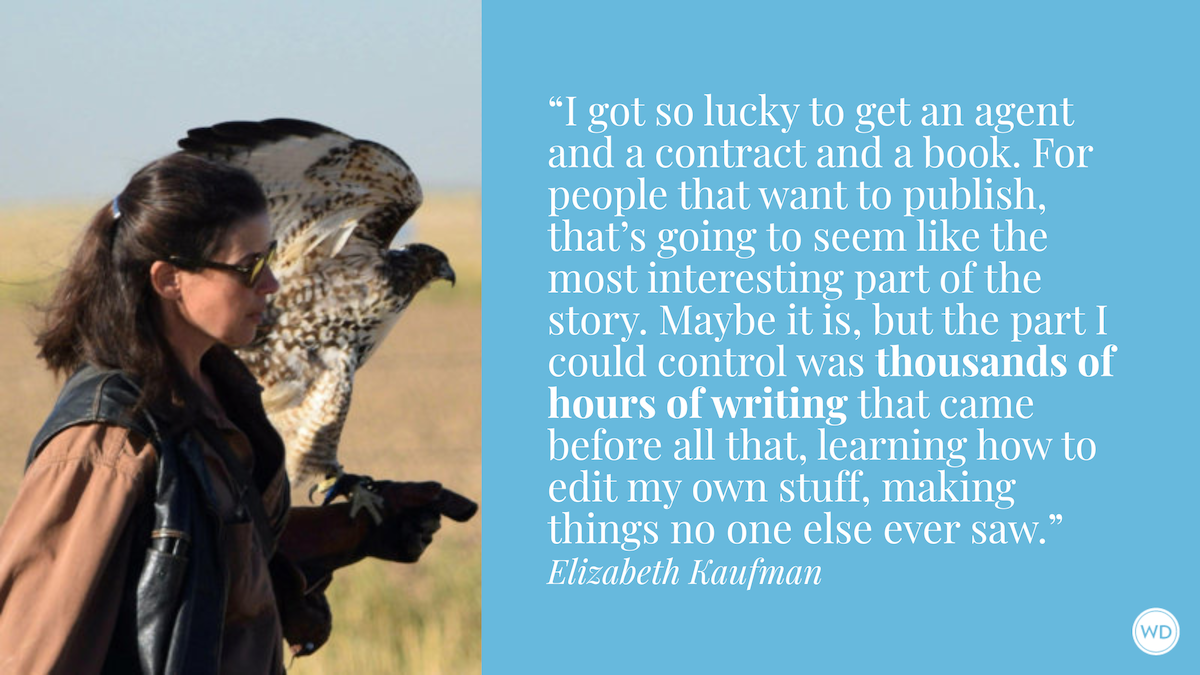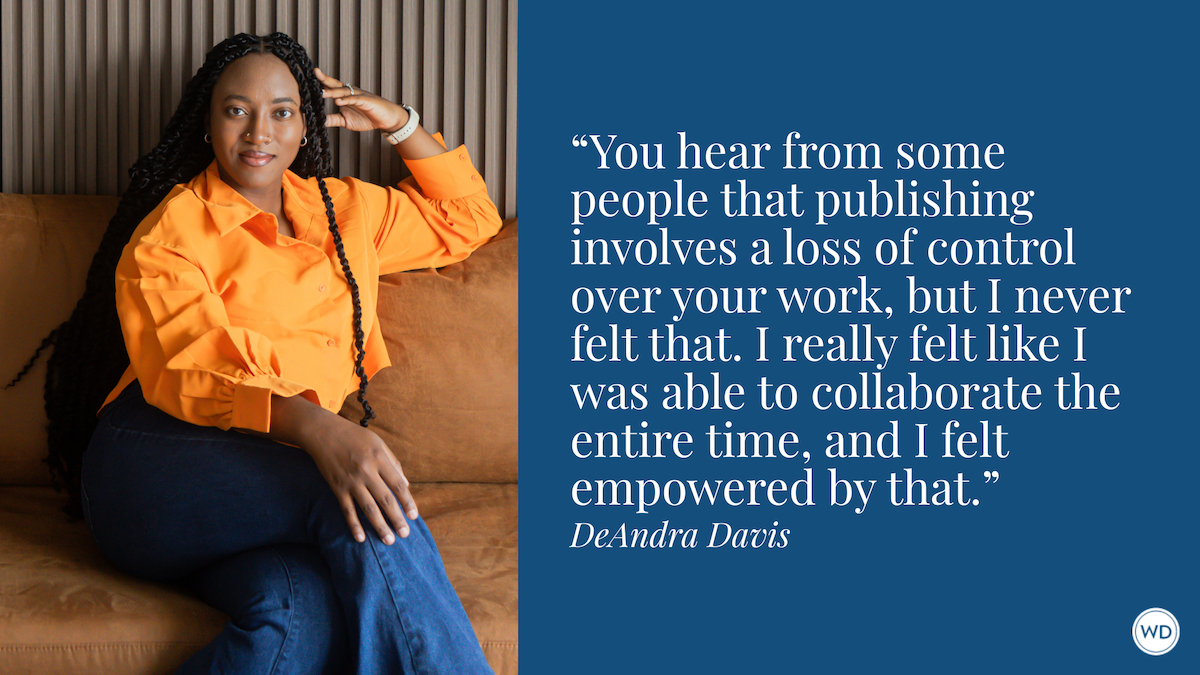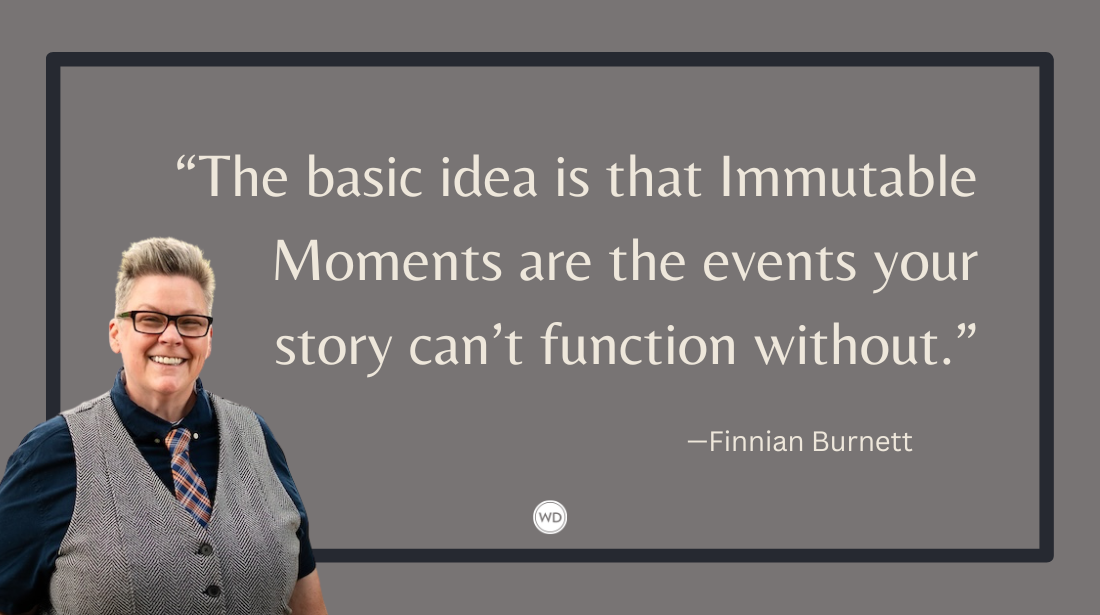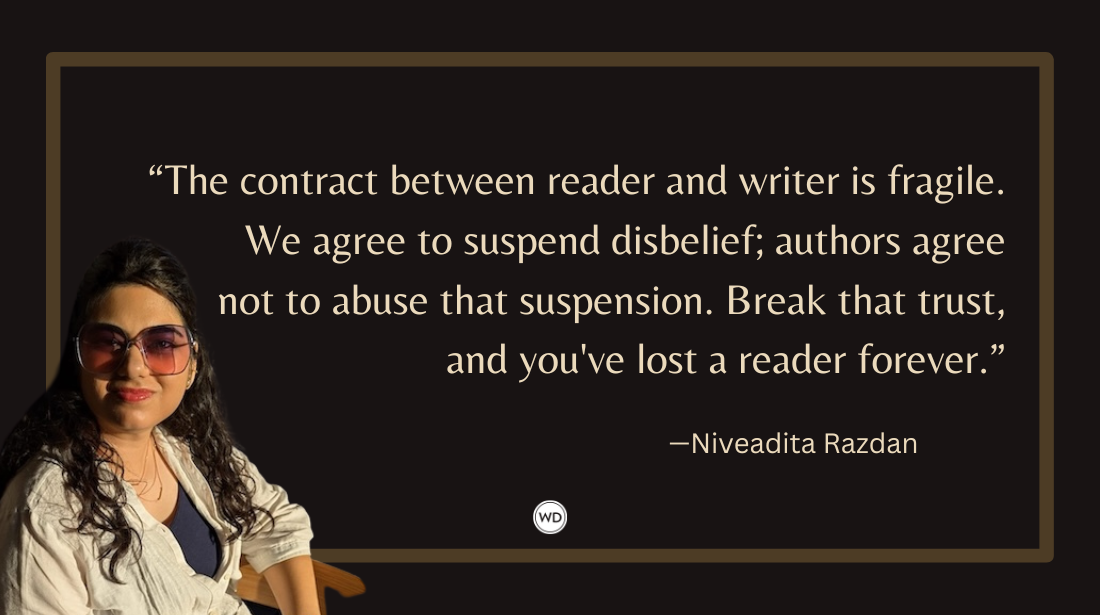Exploring Identity in Fiction
Author Nanda Reddy discusses exploring identity in fiction, including examples of visible, invisible, and buried defining traits, and how character identities help propel plot.
Identity is a complicated thing. It’s how we see ourselves (our truth), how we want to be seen (sometimes fiction), and how the world sees us (interpretations we cannot control). All of this is made messier with baggage. Our personal baggage—childhoods, traumas, and relationships—affects our self-talk and self-perception, altering the way we present ourselves publicly. While society’s collective baggage—colored by history, ideology, the current zeitgeist, and law—affects how we’re seen. This interaction creates an endless, mutating feedback loop, and it drives most stories.
Plot must happen for stories to entertain, but plot is simply a test of identity. No matter how exciting the plot point, readers need a human element—a character’s response—to care. A tree falling in a forest certainly makes a sound, but it needs a character to turn that sound into story. A plot falling onto a page needs a character with identity issues, a character who ideally faces those issues and changes. Because of this, I believe every story at its heart is an identity story.
Identity is often a signaling term in fiction, referring to the realm of other. As an Indo-Caribbean immigrant woman in America, I will always be “othered,” which forces me to micro-analyze myself within our societal framework and keeps me attuned to overt markers of identity, such as race and ethnicity. My debut novel, A Girl Within a Girl Within a Girl, deals with identity on this explicit level as my main character inhabits multiple selves to survive her difficult childhood. But I believe everyone everywhere grapples with the question, “Who am I, really?” And by extension, every writer grapples with the question, “Who is this character, really?”
In exploring identity in fiction, it’s important to understand how your character sees herself, what she hides, and how the world sees her. To start, map out your character’s visible, invisible, and buried defining traits. You could also do this exercise with yourself or famous fictional characters, as demonstrated below.
Visible Defining Traits: How the world sees the character or how your character presents.
Brainstorm words and phrases to reflect first glance and outward characterizations. How would the character answer small-talk questions such as: “What do you do?” and “Where are you from?” Does she code-switch at times, changing speech and behavior according to audience? Does she lie?
Examples:
- Maya, the main character in my novel: dental hygienist, wife and mother, of Indian descent, “Americanized,” has a deaf son, honest. These words represent how she is seen and how she wants to be seen. But she harbors a secret that contradicts this public front.
- Popular fictional characters: Harry Potter—visibly scarred, often bullied, orphan, unaware of abilities, vendetta against Voldemort. Katniss Everdeen—hunter, family caretaker, eschews feminine traits, sacrifices herself to save her sister. But these characters are more than they seem.
Invisible Defining Traits: How the character’s inner circle sees her.
Consider the character’s close friends and family—what do they know that not everyone knows? Start just below the layer of visible and delve deeper by considering events that shaped the character’s life. They’re usually true, but at this level, the character can still be lying.
Examples:
- Maya: fluent in sign language; has tattoos that quote favorite books; former foster child; former alcoholic; former smoker; once stripped for money; avoids discussing the past.
- Harry and Katniss: Harry—suffers from self-doubt, was abused by his aunt and uncle, scar sometimes hurts. Katniss—resents her mother’s crippling grief, hates being used, is a rule breaker, would rather starve than beg.
Buried Defining Traits: Things only the character knows about herself that she might deny or even fail to recall.
Here, dig into the character’s “original damage,” those experiences that shaped them, creating their realm of secrets, fantasies, and regrets. Consider parenting, bullying, breakups, abuses and traumas, and past mistakes. What might be so shameful your character doesn’t tell anyone? Is anything buried so deep she can’t recall them, even as those events shape her behavior?
Examples:
- Maya: Was born Sunny; lived in Guyana; arrived to Miami without papers; was called Neena when she moved, then chose to be called Cindy; finally reinvented herself after an incident she has kept secret and tries to suppress.
- Harry and Katniss: Harry—visits Voldemort in nightmares and visions, feels a connection when he’s angered. Katniss—resists intimate relationships, afraid of courting love and having a family under the dystopian government.
The Interaction of Identity With Plot
When characters interact with plot, these visible, invisible, and hidden characteristics affect their behaviors. Harry Potter’s secret connection to Voldemort causes him to sic a snake onto his cousin, Dudley, and nearly kill his rival, Draco; he resists and fights these manifestations because he does not want to identify with Voldemort who exerts more power over him as the story progresses. In the Hunger Games, Katniss Everdeen must face her fear of intimacy when she is pitted against Peeta, who loves her; to win the games and stoke revolution, she confronts her identity as an unemotional stoic and opens herself to Peeta. In my novel, my character, Maya, must own up to her hidden past to save her marriage and reunite with her long-lost sister. These characters are forced to deal with their buried truths as the plot unfolds; in this way, plot can be seen as a vehicle for character change.
As you sketch a story’s plot, it’s important to understand that your characters’ layered identities will interact with it in interesting ways. This is what makes writing so much fun.
We writers are armed with endless possibilities because identity is complicated. To paraphrase George Saunders: readers are drawn to stories as a way to glimpse into the “black boxes” of each other’s minds. Being equipped with complicated “black boxes” of our own, writers hold enough raw material to craft a world of fascinating identities.
Mining the truths, fictions, interpretations, and baggage we often cannot untangle within ourselves is a great starting point. Simply add a little imagination and test the created identity with a plot, and a messy and honest story will certainly emerge. With a little work, it can become one that connects to the messy, honest identities of readers everywhere.
Check out Nanda Reddy's A Girl Within a Girl Within a Girl here:
(WD uses affiliate links.)
Nanda Reddy is the Guyanese American author of A Girl Within a Girl Within a Girl, a novel that explores an immigrant’s identity. Find her at www.nandareddy.com.








